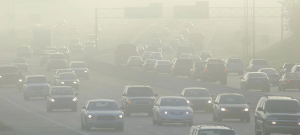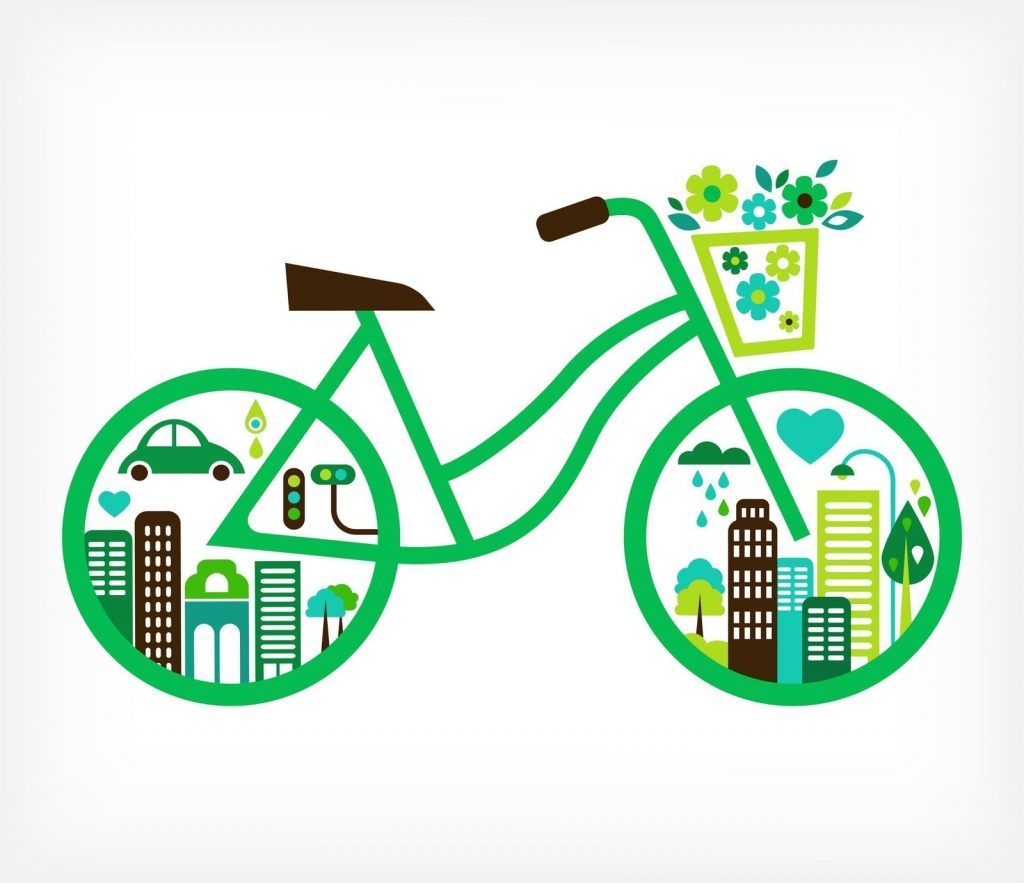Air Pollution and COVID 19’s Silver Lining
By Anthony Lombardo, Bethesda Green Environmental Leader
The COVID 19 crisis has cast a shadow of uncertainty over the world. It has left us with more problems than we could have ever imagined, but what if I were to tell you that this pandemic has been beneficial for our local air quality? The switch to virtual workspaces has decreased the need for transportation and commuting, resulting in a further decrease of emissions and air pollution.
Unfortunately, air pollution is the most detrimental form of contamination, and it is hiding right under our noses. Not only does it directly contribute to climate change by releasing greenhouse gasses into the atmosphere but is also detrimental to human health and wellbeing. Vehicles are known to release nitrous oxide (NOx) and particulate matter which are both extremely toxic forms of air pollution that contribute heavily to smog and soot. NOx is a powerful oxidizing agent and when it reacts with volatile organic compounds in the atmosphere, it creates smog (7). Air pollution, specifically smog and other fine particulate matter, has been proven to lead to increased chances of heart disease, lung disease, and premature death. According to a study done by the World Health Organization ambient air pollution is linked to the cause of 4.2 million deaths per year, making it the single most deadly form of pollution (2). Most of these deaths are occurring in more population dense areas, especially in third world countries where there are less regulations on emissions and air pollution. However, that does not mean here in Montgomery County we are safe from the dangers and effects of air pollution.
The Maryland Department of the Environment expects around 400 premature deaths due to outdoor air pollution each year (4). This leaves us with some of the worst air quality in the nation. According to the EPA (Environmental Protection Agency) ground transportation accounts for nearly 27 percent of greenhouse gas emissions in the United States (3), and Maryland is one of the top contributors taking second place behind New York (5). This problem is very prevalent in our society today, and we need to do everything we can do to minimize the amount of pollution that enters our atmosphere.
The restrictions from COVID 19 put a halt on travel and traffic seemed to disappear nationwide. After a few weeks, there was a drastic drop in air pollution levels in cities around the United States, visibility was improved, and our area had its cleanest air in decades. According to the chart above, we achieved the cleanest air in the DMV in 20 years due to the initial lockdown procedures which prevented most travel in and out of homes (1). This is not just a coincidence. According to a traffic volume map from StreetLight Data, we can see that since the initial shutdown procedures took place, we have slowly crept back up to pre-pandemic traffic volume (6).
What is different now is that traffic patterns have completely shifted since last year. There is no longer as much congestion during the typical morning rush hour (6am to 9am), now it has shifted to transportation for more personal needs such as grocery runs and vacations. The correlation between traffic volume and air quality has never been more apparent. However, the shutdown was not the only thing responsible for the sudden increase in air quality. The weather is another variable that has helped us avoid days in which air pollution is prevalent. The wet and windy weather this past spring allowed for most of the existing contaminants to be dispersed and subdued easily (9). As we can see from the drastic changes in air quality this past year, it is possible to improve it quickly. That is why we need everyone to be playing their part in the fight for cleaner air and a greener future. Every action you take to minimize the use of fossil fuels will improve the lives and future of upcoming generations.
Traffic volume and air pollution are destined to rise to dangerous levels again if we go back to the lives we lived. Throughout the transition back to our pre pandemic lifestyles, it is important for us to incorporate what we have learned about the advantages of decreased traffic and virtual workspaces into our everyday lives. We need to make working from home a more widespread option for employees and encourage the minimization of commuting. There are several other things we can do to ensure a future with the cleanest air possible. Whether it is buying an electric vehicle, carpooling, or biking/walking more. All these little changes would help decrease the amount of pollutants getting into our atmosphere, in turn saving lives.
References
- Air Data – Multiyear Tile Plot. (2018, November 21). Retrieved November 20, 2020, from https://www.epa.gov/outdoor-air-quality-data/air-data-multiyear-tile-plot
- Air pollution. (n.d.). Retrieved November 20, 2020, from https://www.who.int/health-topics/air-pollution
- Brinson, L. (2012, August 29). How much air pollution comes from cars? Retrieved November 20, 2020, from https://auto.howstuffworks.com/air-pollution-from-cars.htm
- The Maryland Healthy Air Act. (n.d.). Retrieved November 20, 2020, from https://mde.maryland.gov/programs/air/pages/md_haa.aspx
- Moura, M. (2020, May 11). Inequitable Exposure to Air Pollution from Vehicles in Maryland. Retrieved November 20, 2020, from https://blog.ucsusa.org/cecilia-moura/air-pollution-from-vehicles-maryland
- Near-real-time Daily VMT for 3,000+ U.S. Counties. (n.d.). Retrieved November 20, 2020, from https://www.streetlightdata.com/vmt-monitor-by-county/
- Nitrogen Oxides Control Regulations | Ground-level Ozone | New England | US EPA. (2019, October 10). Retrieved November 20, 2020, from https://www3.epa.gov/region1/airquality/nox.html
- Quint, C. (2020, February 20). Take the bus, save the Earth, improve your health. Retrieved November 20, 2020, from https://www.inovanewsroom.org/expert-commentary/2017/10/greenyourcommute-2/
- Samenow, J. (2020, April 24). Washington has its cleanest spring air in 25 years: How air quality has improved during the coronavirus crisis. Retrieved November 20, 2020, from https://www.washingtonpost.com/weather/2020/04/22/washington-dc-air-quality-coronavirus/
- Vehicles, Air Pollution, and Human Health. (n.d.). Retrieved November 20, 2020, from https://www.ucsusa.org/resources/vehicles-air-pollution-human-health
About the author:
 Anthony Lombardo, Bethesda Green Environmental Leader
Anthony Lombardo, Bethesda Green Environmental Leader
Anthony is a senior at Walt Whitman High School. He has always had a strong passion for the environment and believes it is more important than ever that his generation strives to create an environmentally friendly future. He plans to use this platform in order to help spread awareness of the destructive habits our society has in place and create change.








